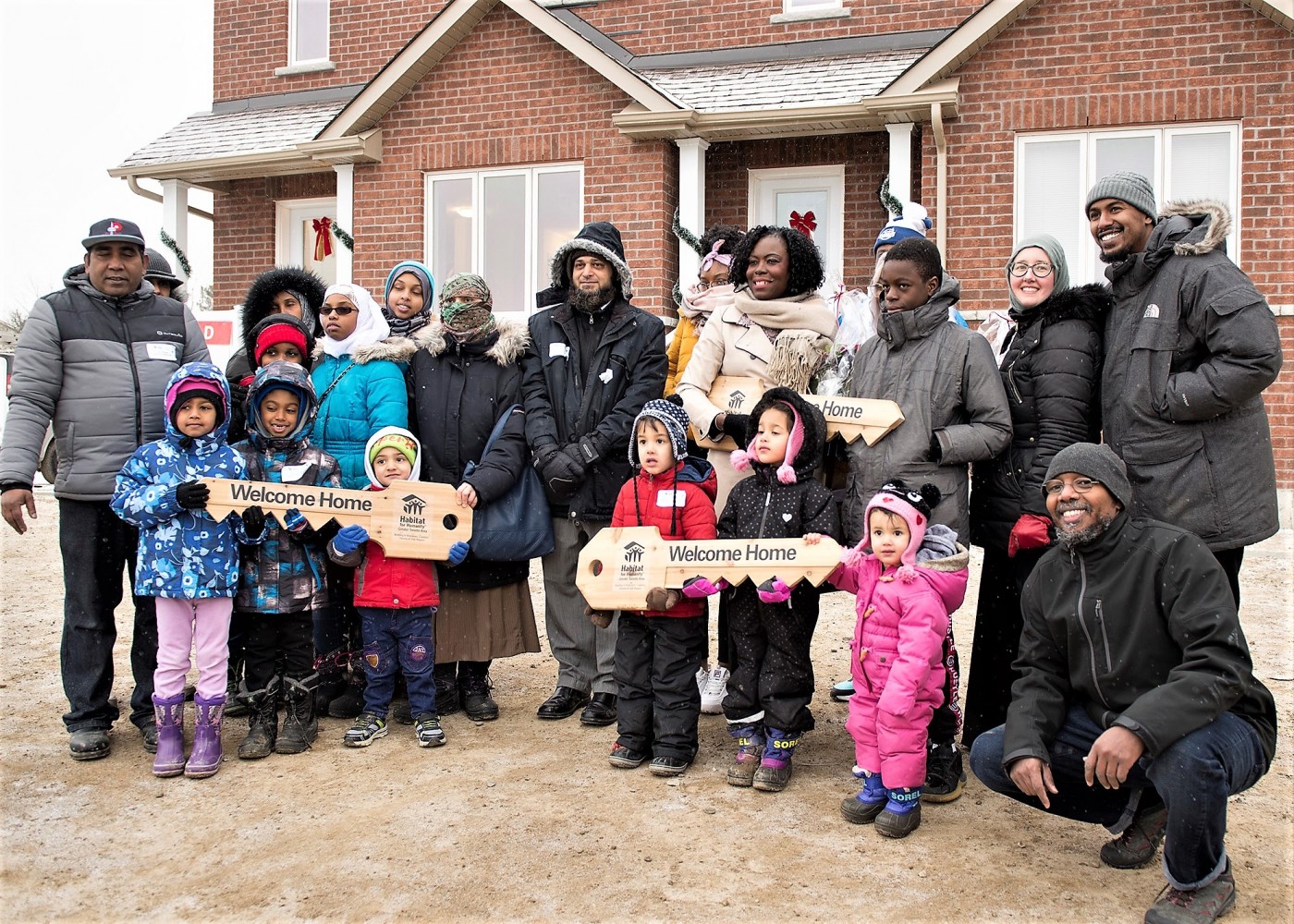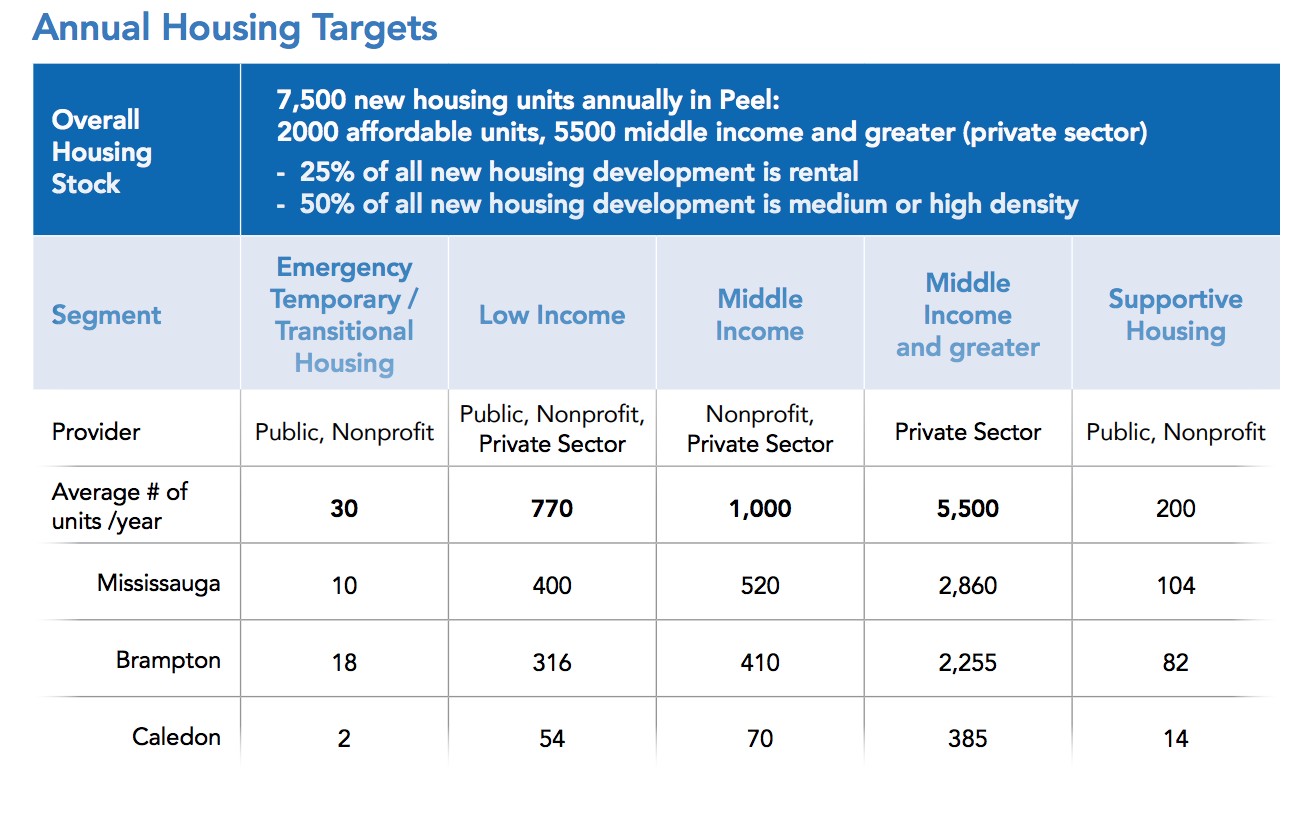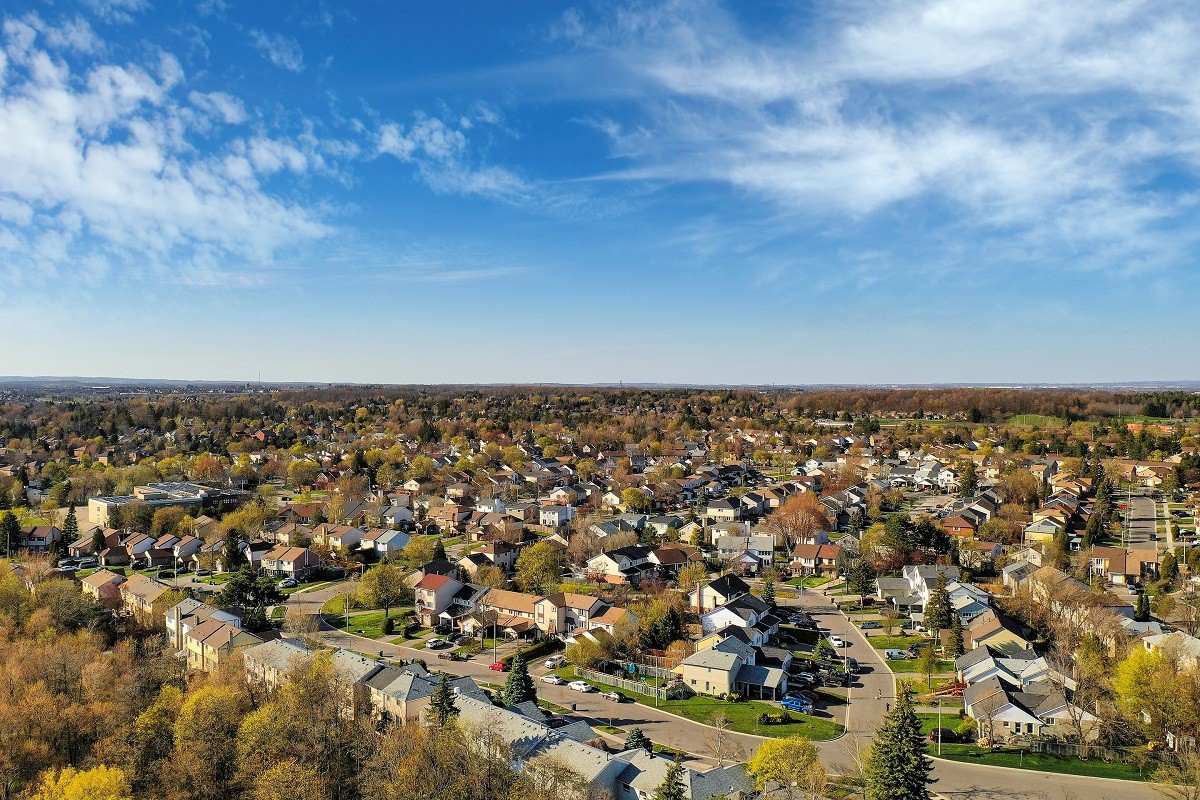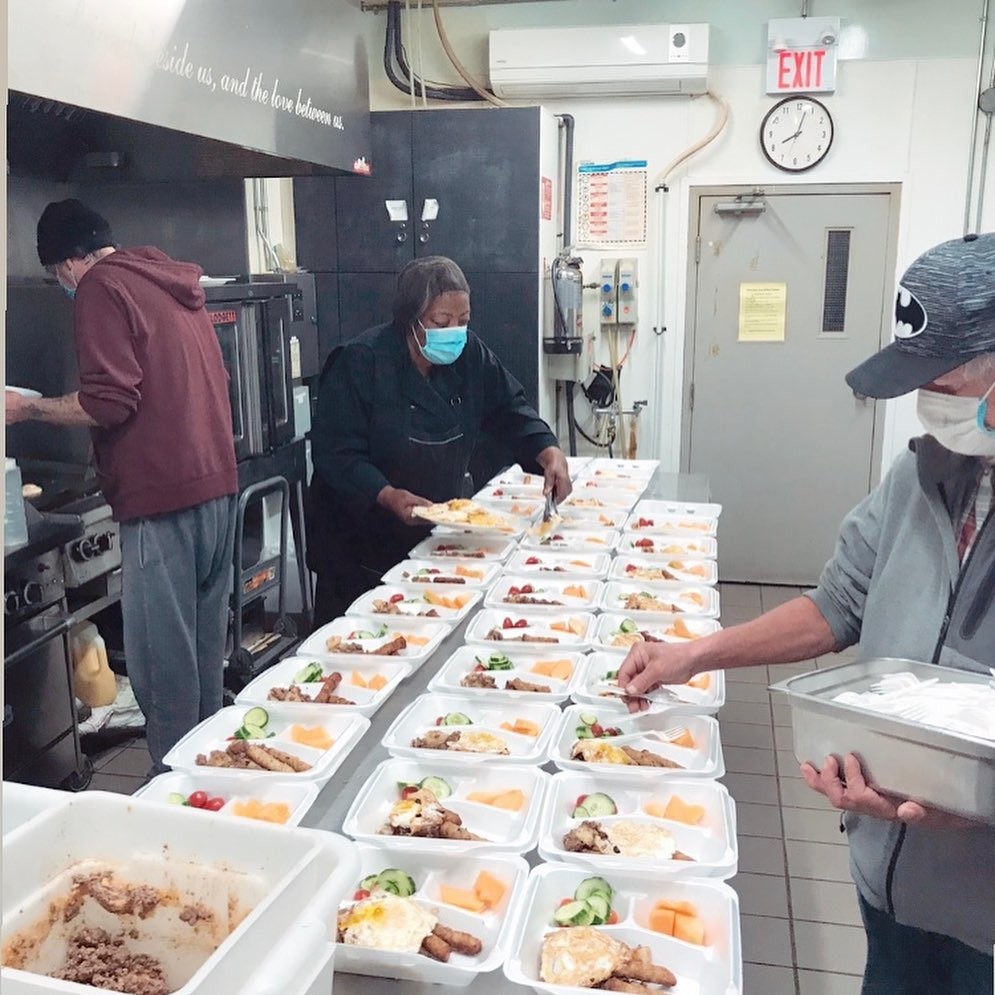
Peel councillors promised a ‘home for all’ in 2018 – they’re failing miserably
From the outside, it feels like the Region of Peel has more affordable housing plans than actual units.
In 2018, councillors endorsed a 10-year housing and homelessness road map, titled Home For All, with ambitious targets designed to meet a desperate need. In total, the plan established Peel needed 7,500 new units annually, with at least 2,000 of them affordable, and another 5,500 at market rate. Across 10 years, the plan suggested public sector involvement to deliver 10,000 of the 75,000 units needed in Peel by 2028.
When staff presented the plan to council on April 5, 2018, it was wholeheartedly endorsed. Councillors voiced their desire to see the province and federal governments pitch in, suggesting ways to increase the affordable housing stock.
They agreed on one thing: the plan had to be a minimum.
“I’m just wondering if we’ve gone far enough,” Caledon Mayor Allan Thompson said. “I think it almost needs to be a discipline and a responsibility, as the Region going forward, in the Official Plan.”
“First, I say, it’s not enough. It’s never enough,” Brampton Wards 2 and 6 Councillor Michael Palleschi agreed.

Targets as laid out in Peel's Home For All plan.
Sitting alongside the Region’s housing targets in its 2018 Home For All plan is a caveat. “These targets are only achievable with funding and policy support from all levels of government as well as participation from private developers, non-profit housing providers, community agencies and residents,” the document states.
The statement is vague. It does not say, for example, how many units the Region could deliver on its own. What are Peel’s targets if other partners don’t step up? After all, council can endorse whatever it wants for other levels of government, but it is only in control of its own budget.
In correspondence with The Pointer, staff at the Region referred to 2018’s numbers as an “aspirational target for affordable housing” and said they would be updating the Home For All document to “avoid future confusion”.
Trying to assess the Region’s performance on the affordable housing file is an exercise in bureaucratic math, with a constantly revolving set of plans, goals and moving targets.
One thing is clear: council and all the other stakeholders are failing to address the ongoing affordable housing crisis in Peel, which has among the country’s longest wait times for assistance.
A report in June captured the frustration senior staff in charge of housing at the Region of Peel are experiencing.
Titled “Improving Housing Outcomes - Advocacy in a Time of Pandemic”, the report provided shocking statistics that illustrate how woefully inadequate the response to Peel’s decades-long housing crisis has been.
“Current ownership and rental housing prices are out of reach for 80 per cent of Peel households,” it stated.
But the real proof of the extent to which the crisis is being ignored was in a figure that reached out from the page and slapped readers across the face: “The 10-year Peel Housing and Homelessness Plan (2018-2028) identified that more than one in 10 new homes that are built must be affordable to low-income households to keep up with forecasted growth – since 2018, less than one in 2,600 new ownership homes built have met that threshold.”
When councillors accepted the Home For All plan in 2018, the text of the motion passed was not ambiguous. A motion moved by Caledon Councillor Annette Groves and seconded by then Mississauga Councillor Nando Iannicca (now Chair of the Region) agreed “that the targets and revised plan” they had been presented with “be endorsed” and “that the needs assessment and targets inform the Region of Peel’s 2018 Housing Strategy thereby fulfilling the requirements of the [provincial] Growth Plan for the Greater Golden Horseshoe”.
The motion made no excuses around the targets, it wholeheartedly accepted them.
Tracking exactly how much of its ‘aspirational’ target Peel has achieved is difficult. The plan, heavy on visuals and light on technical details, is opaque and does not lend itself well to progress reports.
Its targets are broken down into different categories, with different groups expected to contribute to meet the needs of a wide range of residents.
The private sector was tapped, in theory, for as many as 7,270 units per year, nonprofit for up to 2,000 and government for as many as 1,000 (because of overlap these total figures add up to more than the target of 7,500 a year for ten years across affordable housing categories). There is overlap because many different targets are split between sectors. For example, a plan to bring 770 low-income affordable units per year is attributed to the public, nonprofit and private sector. There is no indication of exactly how many units each is expected to create.
The Region, oddly, does not appear to maintain a database or system to track new units that come online under the conditions in its plan. Such a tracking utility is employed by the City of Mississauga throughout its budget process to benchmark various achievements across different sectors, ranging from the fire department to MiWay bus schedules. It gives councillors a handy tool to see if they are delivering on their promises to residents.
Without such tools, analyzing the progress of the plan is near-impossible. As a result, the public, elected officials and media struggle to understand how far short the Region is falling on its legislated responsibility to provide housing.

For most, the price of a new home in Peel is out of reach.
One pillar staff point to in their plans is the Long-Term Housing Master Plan, approved by council in 2019. It is a subsection of Home For All, dealing specifically with the affordable units the Region can provide on its land and with public dollars.
The plan relies on $1 billion to bring online 5,364 new affordable rental units. It is an ambitious goal (a concrete aim, not simply an aspiration) but needs significant context to understand.
Instead of sharing a 2028 deliverable with the Home For All plan, the Housing Master Plan extends to 2034. By the 2028 deadline, the plan will only yield 2,240 units and shelter beds. While the Region has endorsed the billion-dollar plan “in principle”, only $672.8 million has been secured. Just $335.3 million is being fronted by the Region.
It is unclear how many of the 2,240 units can be delivered by 2028 with just under 70 percent of funding secured. A basic calculation would suggest the funding would deliver 1,507 units and shelter beds by 2028, but this assumes a uniform cost for all units. The actual number could vary.
Peel’s Home For All plan suggested 1,000 new units every year for a decade with public sector involvement. Even if all 2,240 units are delivered, that would be just 22 percent of the needs outlined and assigned to the public purse in the 2018 commitment.
Many of the units will come online toward the end of the target period. A 364-unit public rental development at the corner of Bovaird Drive and Kennedy Road in Brampton is listed to be ready between 2022 and 2028, while Twin Pines in Mississauga, estimated at 450 units, is estimated to come online between 2019 and 2026.
According to a short list sent to The Pointer, Mayfield Seniors (Caledon, 60 units), 360 City Centre (Mississauga, 174 units) and a new family shelter in Mississauga have all been completed. East Avenue and Brightwater, both on Mississauga’s waterfront, are in pre-development, along with Chelsea Gardens in Brampton. The pre-development projects will yield roughly 506 units.
With so much emphasis on the nonprofit and private sectors, incentive programs also play a large role in attempting to hit targets. Part of the 2021 budget asks for $5 million from reserves to fund a pilot program to improve construction of affordable housing in Peel. Pending budget approval, the program will launch in the second quarter of 2021.
Regional staff say they track the success of the private sector’s work to bring middle income affordable housing online, a cornerstone of Peel’s aspirational targets. That information is not publicly available. “Regarding the amount of middle income housing that has come online since the beginning of the plan, these figures would be tracked by the Region’s Planning department, however 2020 numbers are not available and we have not yet reported on historical data in a public capacity,” a spokesperson said.
In addition, lobbying efforts continue to be aimed at other levels of government in the hope extra funds will become available.
Working through Peel Region’s housing strategy with its various elements and aggressive, needs-based targets, can be confusing. The Home For All plan in 2018 focused on the needs of the Region and illustrated the positive impacts of Peel's work with photographs of smiling residents in promotional material. Despite the smiles, there are no metrics to suggest Peel is even close to delivering what was outlined in 2018.
Is the Home for All plan dead if the bold, blue numbers printed in it can’t be reached?
“The PHHP (i.e. Home for All plan) is still very much our guiding strategy and we are continuing to make progress to fulfill its vision,” a Peel spokesperson said.

Without adequate housing options, the stress on other social services, like those provided by Regeneration Outreach in Brampton, will continue to increase.
Without a scorecard or some simple measurements to assess the success of the plan, the targets seem rather pointless.
The property tax base is a stretched resource to draw on to provide affordable housing and the decision in the 1990s to download housing to municipalities left them lumbered with a near-impossible task. But that was a quarter of a century ago. The responsibility for housing hasn’t shifted since, no matter how much regions rail against it. Planning in a context that still expects higher levels of government to take responsibility for a locally mandated service, especially one as critical to the well being of residents as affordable housing, is a tough sell.
In 2020, Peel did relatively well for funding, with an announcement of $276 million of federally supported funding for their plan and the Province pitching in to help private developer Indwell build their 68 units along Lakeshore Road. Even after that, roughly 30 percent of the $1 billion plan to build 5,000-plus units remains unfunded. The $335.3 million the Region has committed will sting its budget, but it is spread out over years.
Whether the Region should pitch in more dollars to fund its plans or stay the course on advocacy work and incentives is ultimately a decision for the 24 regional councillors elected to make the tough calls.
The 2021 budget admits the problem remains stark, stating that “demand for affordable housing for low-income and middle-income households far exceeds supply.” The document suggests a total of $367.4 million of capital funds for housing, with roughly $70 million not funded by development charges, external grants or carried-forward from previous budgets.
Without clear progress indicators for the 2018 housing plan, it's hard for councillors to assess the budget ask. Already pouring over a 379-page document at the Region and further pages at the local level, they won’t be able to drill into every detail.
A more transparent reporting process would make it easier for them to decide if they are making the best decisions to protect their most vulnerable residents.
Email: [email protected]
Twitter: @isaaccallan
Tel: 647 561-4879
COVID-19 is impacting all Canadians. At a time when vital public information is needed by everyone, The Pointer has taken down our paywall on all stories relating to the pandemic and those of public interest to ensure every resident of Brampton and Mississauga has access to the facts. For those who are able, we encourage you to consider a subscription. This will help us report on important public interest issues the community needs to know about now more than ever. You can register for a 30-day free trial HERE. Thereafter, The Pointer will charge $10 a month and you can cancel any time right on the website. Thank you.
Submit a correction about this story


